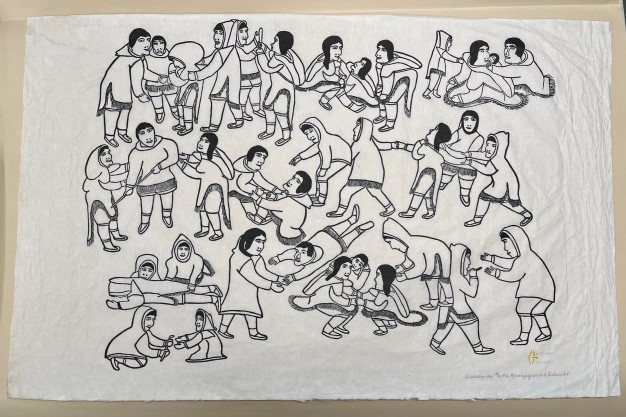An Ordinary Day: Cataloging Alaskan and Canadian Art Prints
This past year I was fortunate to be assigned to catalog a collection of Alaskan and Canadian art prints, donated by Ellen Lehman. After enjoying these prints, which delight and soothe the mind, I was ready to address how to go about cataloging them. To catalog is to succinctly describe and provide access to material via a MARC (machine-readable cataloging) record which exists in a searchable database known as an OPAC (online public access catalog). Printed material at the APS, including these North American indigenous art prints, can be discovered in our OPAC Koha. Each print is represented by a unique call number. M42 is the call number prefix for the larger prints; the smaller prints have the call number prefix F11.
Cataloging these hand-printed images came with a few expected challenges. Generally speaking, art prints are not as widely produced as books or serials. There is a smaller audience and the means of production is usually carried out by the artist rather than a company. Often there are no words on the print itself, thereby necessitating extensive research to determine the medium, subject, and even title, along with any production information. In the case of these Canadian and Alaskan prints, the means of production is left as a question because there is no certain documentation on the print itself. If production information can be found in a secondary source, such as the artist’s webpage or in a book addressing the given print, this information can be provided in the MARC record in brackets, representing probable rather than certain source of information.
The other cataloging challenge specific to these Alaskan and Canadian art prints is how to determine the subject headings, which define the print’s content and provide searchable access points. There are two realms to consider—subjects contained directly in the image itself (animals, inanimate objects, activities, etc.) and subjects inferred such as ethnic groups of people and places which the prints depict. For instance, a subject heading used for all of these prints is ‘Indigenous peoples’. A narrower subject heading also used for all is ‘Indians of North America’. Finally, a specific subject heading can be included such as ‘Inuit art – Baker Lake (Inuit community)’. These subject headings are authoritative, coming from the Library of Congress. Authority records are very important to use because they provide not only authorized terms used universally but also consistency in the MARC records.
An Ordinary Day, shown at the top of the page, was the first and most fragile of the prints cataloged. After cataloging, I passed it along to our former paper conservator, Anne Downey, to repair. Her description of the print and the conservation treatment she performed on it can be read about here.
The artist, Victoria Mamnguqsualuk (1930-2016), was Canadian Inuit and came from a family of artists who were also hunters in the Northwest Territories. When she was thirty, she moved to Baker Lake, Nunavut. It was here that she joined the Sanavik Cooperative, which included a print-making workshop.
The stone-cut print, which artist Ruth Annaqtuusi Tulurialik assisted with, shows people tumbling about, playing in the snow, interacting with each other, most smiling. Their clothing and human forms, including expressions are illustrated in harmonious lines and curves. This delightful print full of motion was one of eight prints featured in the first cataloged collection of prints by the Sanavik Cooperative, Baker Lake in 1970.
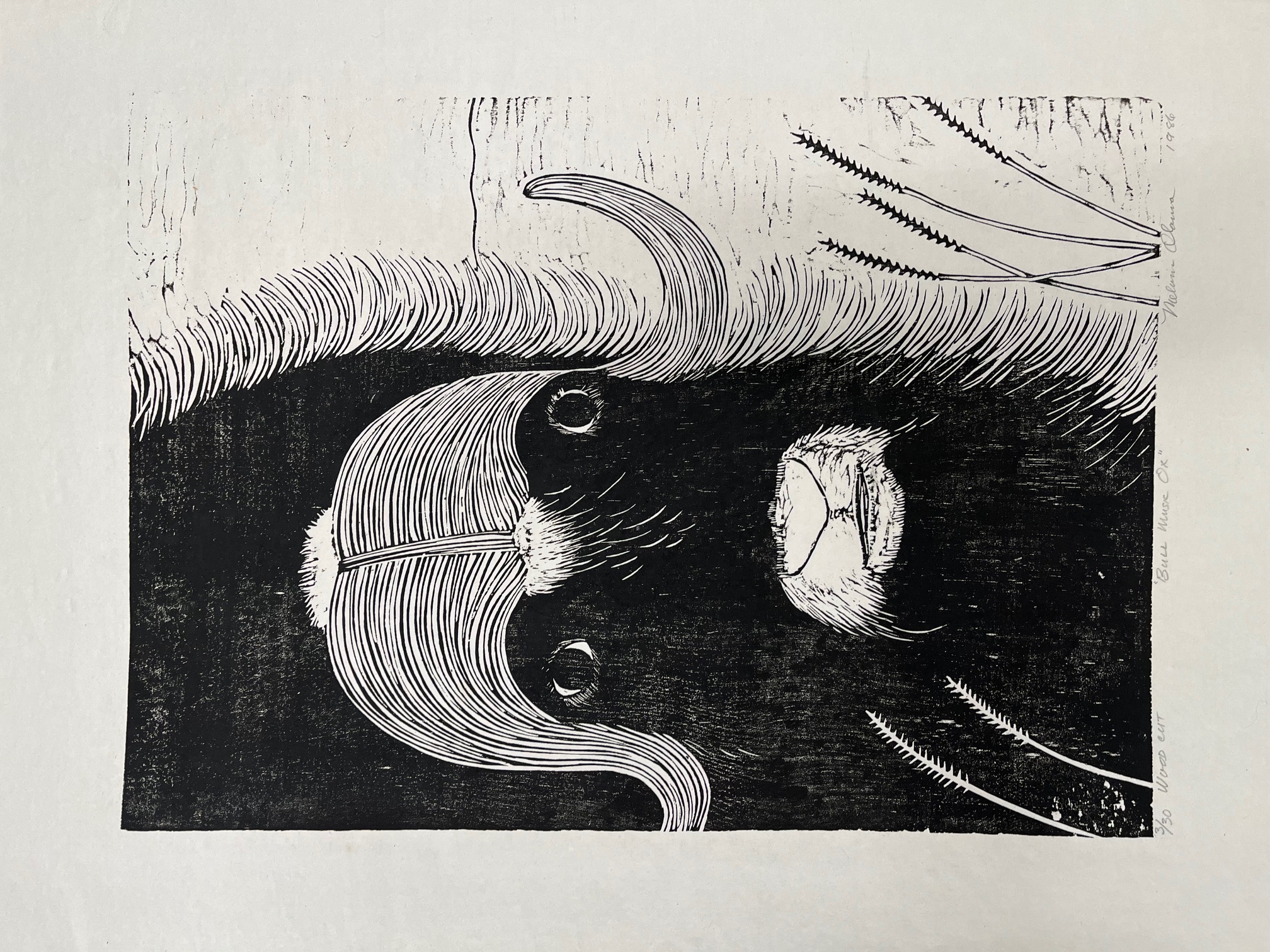
Bull Musk Ox is a powerful, yet calming, woodcut print that illustrates how an animal exists in nature, without the trappings of society. The bull ox is still and aware, standing among the reeds, watching. Melvin Olanna (1941-1991) grew up in Shishmaref, Alaska, an Iñupiaq village. He spent his childhood learning to hunt on the Bering Sea ice. He contracted tuberculosis as a child and while hospitalized, turned to art. As an adult, he studied at the Native Arts Center, University of Alaska. The photograph below shows Melvin Olanna drawing at a college in Alaska.
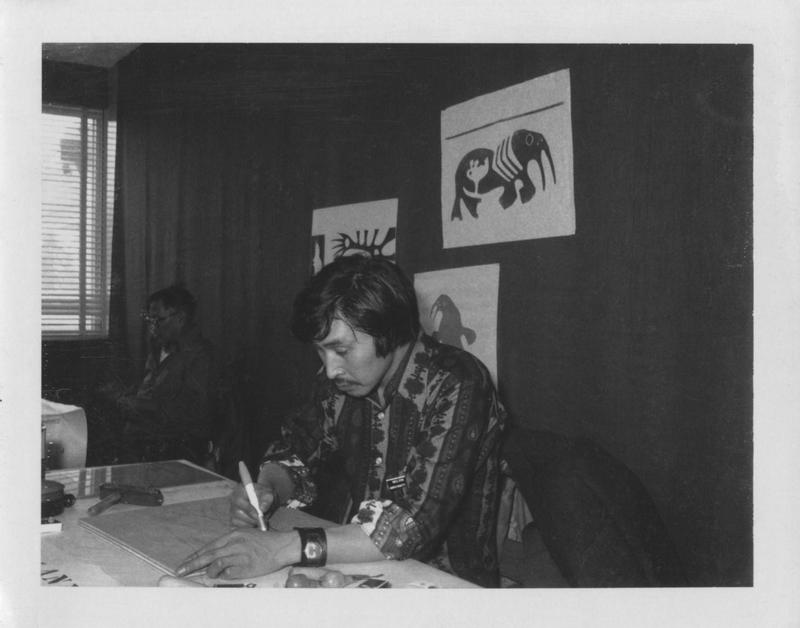
The next two prints are stencil prints with watercolor done by the Dutch-American artist Rie Muñoz (1921-2015). Muñoz was born in Van Nuys, California, moving to the Netherlands with her family in her childhood. Her parents sent her back to the United States at the beginning of World War II. As a young adult she studied art at Washington and Lee University. In 1951, she visited Juneau, Alaska and decided to stay, creating art prints of life in Alaska. These two selected prints, Rookery and The Kiss, need no words to convey the simple beauty of life.
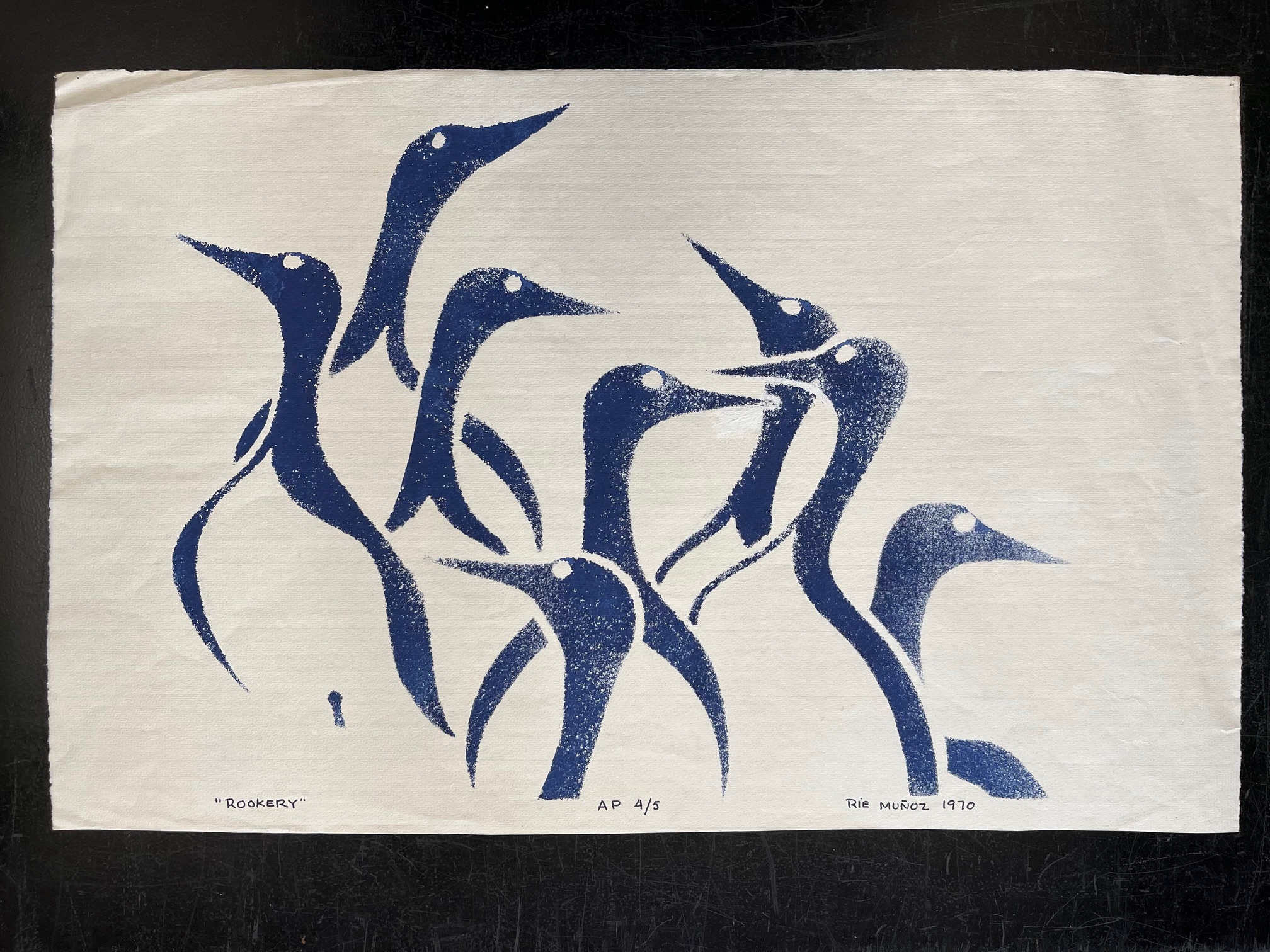
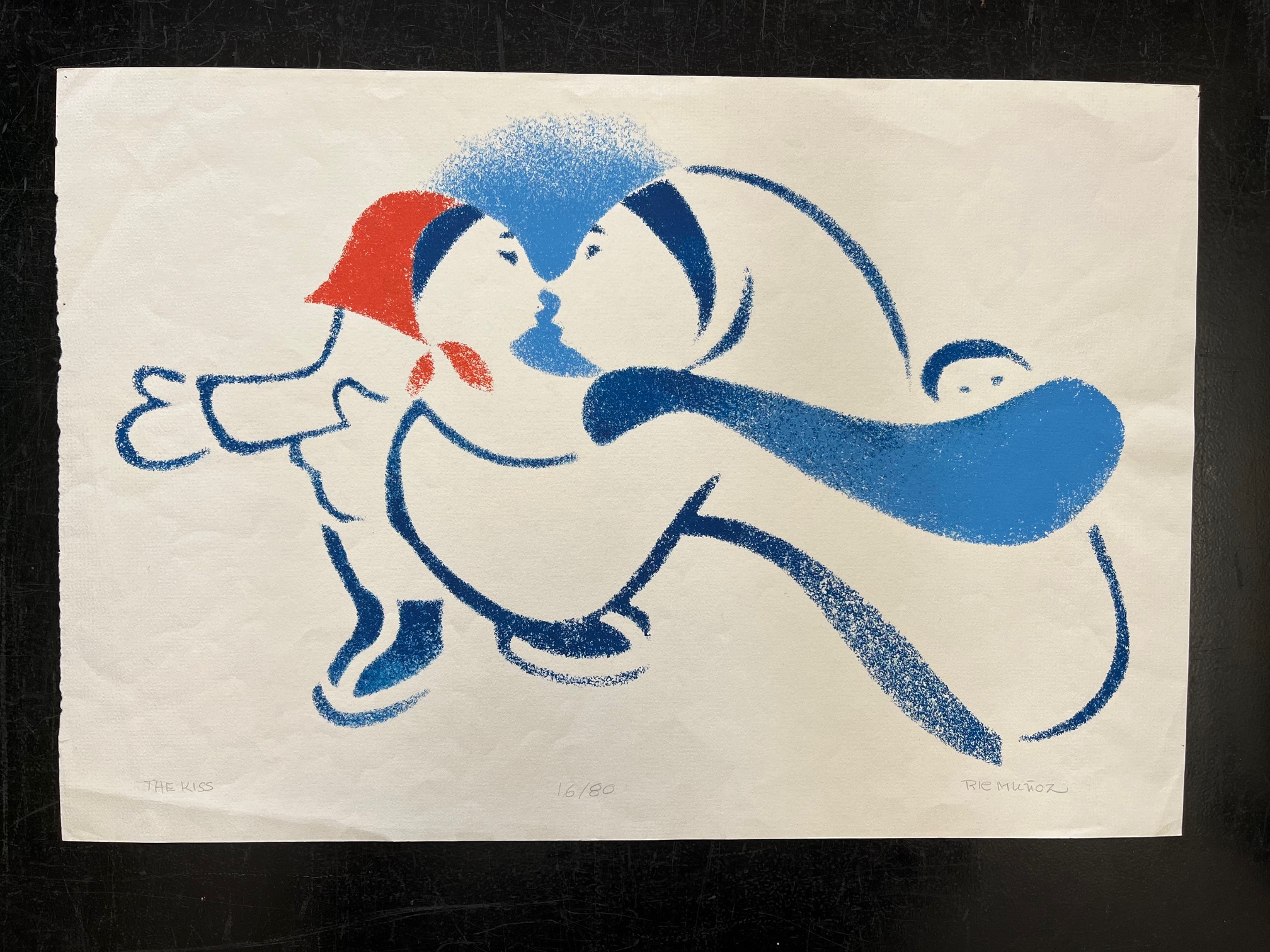
Included also in this collection of largely Alaskan art prints is a wood engraving print entitled The Terrible Clapping Cliffs by Dale DeArmond (1914-2006). It is accompanied by the maple wood block used to produce the print.
Dale DeArmond was born 1914 in Bismarck, North Dakota. While attending Stadium High School in Tacoma Washington, she met her future husband, Robert Neil DeArmond, a native of Sitka, Alaska. After they married, she spent her adult life in Alaska, both in Sitka and Juneau, working in libraries while continuing to draw and paint. In 1960, she decisively changed direction in the medium worked in, abandoning pencil and ink drawings and oil painting to working solely with woodcuts. In the 1980s she changed mediums again, working exclusively in wood engraving.

To be able to see and touch the wood block used to make the corresponding print is not only useful in understanding how the print was made but also offers a simple experience living in tangible reality. It is the role of the cataloger to make this experience accessible via an authoritative and permanent MARC record in the OPAC Koha.


